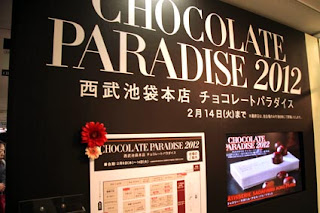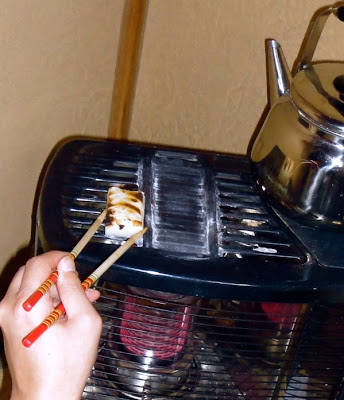January 22nd is Curry Day.
After eating far too much mochi and every variety of nabe, it's nice to change to youshoku (Western-style food).
Curry day comes from the history of Japanese school lunches,
or “kyushoku”. It seems that lunches were served for poor students at various
schools on an ad-hoc basis since the turn of the century, but really took off
in 1946, when Japanese Americans, worried about the poor nutrition of Japanese
children after the war, started a scheme to provide food aid for school
lunches. Shichinosuke Asano started the group on January 22nd 1946 in San
Francisco. Immigrants in North and South America contributed and sent food aid
until the mid 1950s. You can read more information at the excellent
yokosonews.com website.
In honour of their efforts, January 22nd was declared “curry
day” in the early 1980s, and this most popular of school lunches is served on
that day. It’s also traditional to have curry on Friday nights in the Japanese
Marine Self Defence Force.
This year, “Curry Day” was a Sunday, so sadly, schools
didn’t serve a special curry lunch, but we had curry at home. Looking into the
history of Japanese curry (which tastes quite different to the Indian style
curries I grew up with), I found what we eat now in Japan as “curry rice”, was
developed by the Japanese Navy. Curry first came to Japan as the country opened
up after the Edo period, when it was considered a rather exotic, luxury food.
The story goes that the Japanese navy, worried about sailors’ malnutrition on
long voyages (since plain rice, miso and pickles was the standard fare),
adopted British Navy style meals with meat and vegetables. They adapted curry
to be served at sea, with navy cooks adding more vegetables and flour to
thicken the sauce (so it didn’t spill easily) and beef tallow (fat), which
keeps for a long time. Since it was easy to cook, tasty and long-lasting, it
became popular at home too.
This is the “authentic” Japanese Navy Curry, based on the
original 1908 recipe. It’s a popular souvenir for visitors to Yokosuka in
Kanagawa, which was originally the Japanese Navy’s base and shipyards and is
now home to the US Navy.
Curry is so popular that different regions of Japan have
their own variations. In Sapporo, I tried the ‘soup curry’, which really fills
you with warmth and good feelings on a snowy day. At Omiya station in Saitama,
the supermarket has a kind of ‘curry library’ with hundreds of regional
curries, stacked like books!
 |
| Start your own curry library! |
Since curry sauce tastes even better the next day, it’s
popular to serve it as curry udon. I add a little (just a little) water to thin
the sauce slightly – especially if you use the commercial curry roux cubes,
they tend to thicken up a lot. Boil some udon noodles according to the pack
instructions, put them in a bowl and pour over the curry sauce. Easy! I
sometimes see people add shredded cheese (best eaten alone; it’s a tasty, gooey
mess). I like to make curry spaghetti. The easiest way is to use pre-made Keema
Curry – just put it on top of spaghetti, instead of rice. Or you can make a
normal bolognaise sauce with plenty of onion, ground beef, garlic and some
chopped, peeled tomatoes, and then add curry powder to taste.
While I used to have mango chutney, cucumber raita or
pickled lime with my curries in Australia, the popular sides here are pickled
rakkyo – like a pickled onion crossed with a schallot bulb – and my favourite,
fukujinzuke, a pickle which is a little sweet and crunchy, usually with daikon,
eggplant and cucumber.
 |
| Rakkyo |
So, make Friday curry day! If you’re down in Yokosuka, you
can try the Yokosuka Kaigun Curry restaurant near Yokosuka-chuo station or a
restaurant called Wood Island. Enjoy it the traditional way with pickles, a
small salad and a glass of milk! Or you can make it at home with the rather
militaristic looking “Yokosuka Kaigun Curry” package from choumi.jp, as seen
above.

































